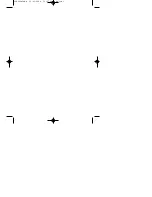
pattern of wide and narrow elements determines the character being encoded.
The intercharacter gaps are spaces with a minimum nominal width of 1X.
See
appropriate ISO/IEC JTC 1/SC 31 reference, when available.
Code 128:
A continuous, variable length, bar code symbology capable of
encoding the full ASCII 128 character set, the 128 extended ASCII character set,
and four non-data function characters. Code 128 allows numeric data to be
represented in a compact double-density mode, two data digits for every symbol
character. Each Code 128 symbol uses two independent self-checking features,
character self-checking via parity and a modulo 103 check character. Each Code
128 symbol consists of a leading quiet zone, a start pattern, characters
representing data, a check character, a stop pattern, and a trailing quiet zone.
Each Code 128 character consists of eleven 1X wide modules. Each symbol
character is comprised of three bars alternating with three spaces, starting with a
bar. Each element (bar or space) may consist of one to four modules. Code 128
has three unique character sets designated as Code Set A, B, and C. Code set
A includes all of the standard upper case alphanumeric keyboard characters, the
ASCII control characters having an ASCII value of 0 to 95, and seven special
characters. Code set B includes all of the standard upper case alphanumeric
keyboard characters, lower case alphabetic characters (specifically ASCII
character values 32 to 127), and seven special characters. Code set C includes
the set of 100 digit pairs from 00 through 99, inclusive, as well as three special
characters. The FNC1 character in the first character position after the start code
of Code 128 designates that the data the follows complies with the UCC/EAN-
128 standards.
See appropriate ISO/IEC JTC 1/SC 31 reference, when
available.
continuous bar code symbol:
A symbology in which there is no intercharacter
gap, specifically, the final element of one symbol character abuts the first
element of the next symbol character and all the elements carry data
contiguously. Compare to “discrete bar code symbol.”
contrast:
Amount of difference in reflectance between the dark bars and the
light spaces of a machine-readable symbol.
conventional printing process:
One of the printing processes typically using a
printing plate (or cylinder) and wet ink, or a thin foil in the case of hot-stamp, to
produce multiple impressions of an image on a substrate. Includes lithography,
letterpress, flexography, photogravure, hot foil stamping.
cpi (characters per inch):
Used as a measure of bar code density.
cpsi (characters per square inch):
Used as a measure of two-dimensional
symbol density.
customer:
In a transaction, the party that receives, buys, or consumes an item
or service. Compare to “supplier”.
42
Summary of Contents for Quick Check PC600
Page 1: ...Quick Check PC600 Bar Code Verifier User s Guide ...
Page 6: ...5 ...
















































